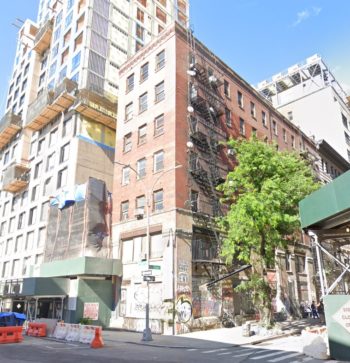
99 Vandam Street
Loft Law prevents using bankruptcy as a tool to circumvent housing law. In 2002, Bridge Associates of Soho, Inc. (“Bridge Associates”) acquired 99 Vandam Street in the SoHo neighborhood of Manhattan. 99 Vandam is a seven-story residential loft building that has been governed by Article 7-C of the New York Multiple Dwelling Law (“Loft Law”) since approximately 1991. Loft Law governs the conversion of manufacturing and commercial use buildings to residential use buildings. The law generally requires landlords to bring buildings into conformity with the required laws and codes for residential occupancy. Since acquiring the once commercial building, Bridge Associates never received a certificate of occupancy for residential use, nor have they commenced the process to bring the property into compliance with the Loft Law.
In February 2018, Bridge Associates filed for relief under Chapter 11 of the United States Bankruptcy code. In May 2019, Bridge Associates made a motion pursuant to §363(f) of Chapter 11 to sell the occupied residential loft building “free and clear” of all liens, claims, encumbrances and interests. If granted, the motion would allow Bridge Associates to sell the property regardless of the rights afforded to the tenants by the Loft Law.
The building’s tenants and the New York City Loft Board opposed the motion, arguing that the Loft Law gave them possessory rights in the building, which cannot be altered by the bankruptcy motion. Loft Law also requires that this residence (99 Vandam) be their primary residence for their rights to be applicable. Bridge Associates argued that the tenants were required to have paid rent to be afforded those possessory rights.
The Bankruptcy Court in the Eastern District of New York ruled in favor of the tenants. On appeal, the Second Circuit reviewed the case in its entirety and upheld the Bankruptcy court’s ruling. The court ruled that Bridge Associates would not be able to recover rent, re-possess the building for non-payment of rent or bring a special action for possession of the premises (in this case for the sale of the premises) until bringing the building into compliance with Loft Law. The court reasoned that the purpose of the Loft Law is to protect the welfare, health and safety of tenants while property owners bring a covered property into compliance with the required laws for residential occupancy. Allowing a sale would essentially allow the Bankruptcy code to trump the safety and health measures afforded by state housing laws.
The Second Circuit confirmed this construction of the Loft Law in Chazon LLC v. Maugenest, a 2012 New York Court of Appeals case. In that case, the Court of Appeals held that Loft Law bars actions or special proceedings for possession of a property and that occupancy rights are not conditioned upon the payment of rent.
Representatives from the New York City Loft Board stated “We’re pleased the court ruled that the owner could not use a bankruptcy proceeding to avoid its obligations to its tenants under the Loft Law.”
Slava Hazin, attorney for the tenants, stated “the Second Circuit was absolutely correct. Landlords cannot use bankruptcy to get out of their obligations to their tenants.” Hazin added “the whole point of the Loft Law is to protect tenants.” Slava Hazin is a Partner at Warshaw Burstein and a 1991 New York Law School graduate.
In re Bridge Associates of Soho, Inc., 779 Fed.Appx. 827 (2nd Cir. 2019).
By: Jason Rogovich (Jason Rogovich is the CityLaw Fellow and New York Law School Graduate, Class of 2019)

